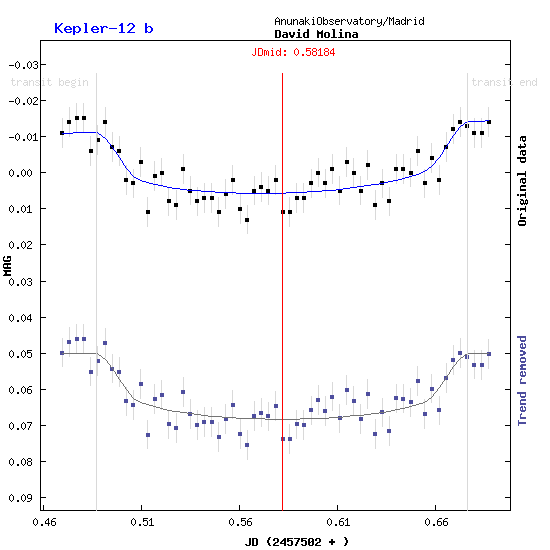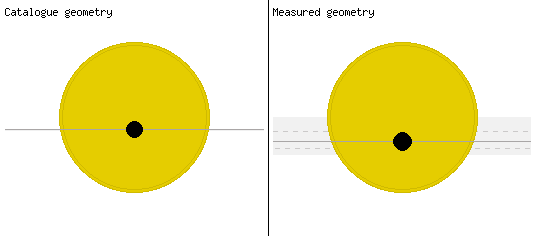Kepler-12, also known as KIC 11804465 in the Kepler Input Catalog, is a late G-type F star. This strongly corresponds to a solar-type dwarf star reaching the end of the main sequence, and is about to become a red giant. Kepler-12 is located 600 parsecs (1957 light-years) away from Earth. The star also has an apparent magnitude of 13,438, meaning it cannot be seen from Earth with the naked eye.
The star is slightly more massive, a little richer in iron and a little hotter than the Sun. However, Kepler-12 is larger, with a radius of 1,483 times the radius of the Sun.
Kepler-12b is a hot Jupiter orbiting the G-type star Kepler-12 about 600 parsecs away. The planet has a large anomalous shape that could not be explained by standard models at the time of its discovery, as it is almost 1.7 times the size of Jupiter, while being 0.4 times the mass of Jupiter. The planet was detected by the Kepler spacecraft, a NASA project searching for planets transiting in front of their parent stars. The discovery was published on September 5, 2011.
https://arxiv.org/abs/1109.1611







